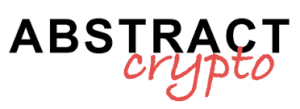In the last few weeks, there has been a lot of discussion about the introduction of the MiCA regulatory framework in Europe and its implications on non-compliant stablecoins like Tether (USDT).
In this article, we see how and to what extent the new EU regulation could have repercussions on the future of Tether?
Spoiler: there isn’t much to fear at the moment.
All the details below.
The MiCA regulatory framework imposes strict rules for stablecoin issuers
On December 30th, the regulation MiCA (Markets in Crypto Assets) officially came into effect in Europe, establishing new regimes for stablecoin issuers.
The controversial European regulatory framework requires companies that manage their own electronic money to have specific licenses under the supervision of the European Banking Authority (EBA). From now on, only banks and authorized financial intermediaries will be able to trade e-money token (EMT) and asset-referenced-token (ART).
The legislation also establishes actual limits for those companies, such as Tether, that operate with headquarters outside the Eurozone territory.
The MiCA requires that stablecoin issuers hold the majority of their collateral assets with a European credit institution.
For USDT this represents a significant problem, given that about 83% of Tether’s reserves is held in US Treasury securities and cash equivalents.
The same CEO of the company has shown little willingness to comply with this request, as it would mean exposing oneself significantly to a third-party bank.
In Europe, in fact, deposits are guaranteed up to 100,000 euros thanks to the Deposit Guarantee Scheme (DGS), but the amount that Tether should put on the table is much larger.
Not to mention the fact that this approach could favor potential depeg, seriously threatening the stability and reliability of USDT.
In fact, given the incompatibility of the MiCA regulation with Tether’s position, it is likely that the USDT stablecoin will become illegal in Europe.
What are the implications of MiCA for Tether USDT?
Given the non-compliance of Tether’s USDT with the MiCA regulation, many have supported the idea that cryptocurrency exchanges would delist the stablecoin.
For the moment, however, this thesis is inaccurate as there have been no delistings for the cryptocurrency, except for Coinbase (which supports the competitor Circle and USDC in the position of shareholder).
Binance, which represents the largest exchange in the world by trading volumes, has only limited support for USDT; still allowing trades, deposits, and withdrawals.
Other leading exchanges in the sector such as Crypto.com, Bybit, Kraken, Bitget, HTX, Mexc, and Kucoin have not mentioned the possibility of removing the coin.
It seems, therefore, that, at least for now, the exchange platforms have independently decided to continue offering trading services denominated in USDT.
This is because the Tether asset represents the most liquid and widespread stablecoin in the entire sector, with a strong presence on various blockchains.
In the coming months, there will still be the possibility that European regulators will put pressure on crypto brokers, forcing them to remove USDT from exchanges.
However, up to now we are only talking about media speculations, with nothing concrete that could justify the current FUD campaign against Tether.
This latter is also preparing for the potential impact by relying on MiCA compliant companies, such as Quantoz, for the issuance of a new legit currency in Europe.
Tether targets America and Asia after Europe’s impositions
Delisting or not, for Tether the presence of USDT in Europe and MiCA compliance do not seem to be such central factors for the future of its business.
As indeed stated by the cryptocurrency analyst Bitblaze, the largest market share for Tether is currently in Asia, where regulations are more favorable.
According to recent studies, Asia represents about 60-70% of the annual USDT volumes, with North America in second place with 15-20%. Following is Europe with 10-15% of the volume and finally Africa with 5-10%.
Giving up the European market would mean losing only a small part of its presence in the stablecoin crypto sector.
Not to mention the fact that, even in a delisting scenario in Europe, USDT would still be tradable via DEX by users residing in the Eurozone.
Furthermore, it should be noted how recently Tether has decided to strengthen its influence in America, given the difficult context of MiCA.
Last week, the CEO Paolo Ardoino announced that he had obtained the Digital Asset Service Provider (DASP) license in El Salvador.
Tether has thus moved its offices to the crypto-friendly island of Nayib Bukele, described by Ardoino as a “beacon of innovation in the digital asset space“.
The objective of the cryptographic company is to expand into emerging markets in Central America by promoting the culture of exchanges in stablecoin.
Tether finds a home 🏠
A few weeks back we pointed out that the market cap of $USDT was declining as EU-based crypto exchanges delisted the world’s largest fiat-backed USD stablecoin after the introduction of MiCA, legislation that the token does not comply with because the… pic.twitter.com/zaerJl0f6f— Trakx (@official_trakx) January 22, 2025
USDT leader dei volumi di scambio stablecoin
Despite the regulatory disincentive of MiCA, Tether still represents the most dominant stablecoin issuer within the crypto industry.
Since the entry into force of the new USDT regulation, its capitalization has remained almost identical, with a loss of only 0.37% in the dominance of the entire market.
As of today, the currency is worth a total of 133 billion dollars, with a market share of 64.8% in the cryptographic stablecoin sector.
Since last year, its capitalization has increased by 45 billion dollars, highlighting its success and the strong interest from investors.
Furthermore, according to the on-chain data reported by Visa, Tether with USDT seems to relentlessly lead the trading volumes in stablecoin for several years now.
The currency is the most used in this type of transactions, with a very evident gap with the main competitor USDC (MiCA compliant stablecoin).
In particular, it has been since April 2019 that there has not been a month where USDC recorded higher trading volumes compared to USDT.
As of today, its volumes are about double those of USDC and more than 300 times those of FDUSD.


